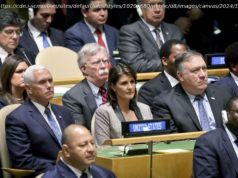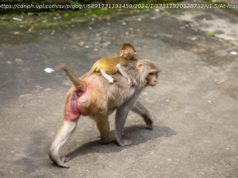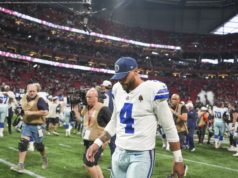Buttigieg is going for the
There was a word missing from the speech Pete Buttigieg gave in South Bend, Indiana, announcing his presidential campaign. It’s a word you heard twice in Bernie Sanders’s and Beto O’Rourke’s announcement speeches, nine times in Cory Booker’s,21 times in Kirsten Gillibrand’s,23 times in Kamala Harris’s, and 25 times in Elizabeth Warren’s.
That word? “Fight.”
Instead, Buttigieg returned to a word those speeches shied away from, a word whose relative absence from the Democratic primary is all the stranger given its potency in past Democratic campaigns.
That word? “Hope,” which Buttigieg said eight times, Gillibrand said three times, O’Rourke uttered once, and Sanders, Harris, Warren, and Booker avoided entirely.
Bill Clinton, famously, was “the man from Hope.” Barack Obama ran on “hope and change.” But hope has become unfashionable in the Democratic primary. Partly, that’s because Democrats are trying to build a legacy distinct from Obama’s and are looking for language of their own. Partly that’s because the lesson many Democrats took from Sanders’s strong showing in 2016, and Donald Trump’s victory, is that an angry country is looking for fighters — and no matter how many times Hillary Clinton played “Fight Song” at rallies, a critical mass of voters didn’t think she really meant it (more on the gendered dynamics of this in a minute).
Buttigieg’s rise has been unexpected and, to be honest, a bit weird. Young mayors of midsize cities don’t typically vault ahead of talented presidential fields to poll third in Iowa and New Hampshire before they’ve even officially announced their campaigns. “Candidly, I don’t even know all the reasons why this is going so well,” Buttigieg told New York magazine.
But there is a reason, and it’s bound up in the psychology that attracts liberals to the word “hope.”
Liberals and conservatives have different ideologies, different philosophies, different policies, different parties. But beneath all that is the fact that they have different psychologies.
In their book Open Versus Closed, Christopher Frederico, Christopher Johnston, and Howard Lavine write that “Democrats and Republicans are now sharply distinguished by a set of basic psychological dispositions related to experiential openness — a general dimension of personality tapping tolerance for threat and uncertainty in one’s environment.”
A similar argument, using slightly different data, can be found in Marc Hetherington and Jonathan Weiler’s Prius or Pickup:
Of the many factors that make up your worldview, one is more fundamental than any other in determining which side of the divide you gravitate toward: your perception of how dangerous the world is. Fear is perhaps our most primal instinct, after all, so it’s only logical that people’s level of fearfulness informs their outlook on life.
In Predisposed: Liberals, Conservatives, and the Biology of Political Differences, John Alford, John Hibbing, and Kevin Smith write:
Numerous studies have linked these personality dimensions to differences in the mix of tastes and preferences that seem to reliably separate liberals and conservatives. People who score high on openness, for example, tend to like envelope-pushing music and abstract art. People who score high on conscientiousness are more likely to be organized, faithful, and loyal. One review of this large research literature finds these sorts of differences consistently cropping up across nearly 70 years of studies on personality research. The punch line, of course, is that this same literature also reports a consistent relationship between these dimensions of personality and political temperament. Those open to new experiences are not just hanging Jackson Pollock prints in disorganized bedrooms while listening to techno-pop reinterpretations of Bach by experimental jazz bands. They are also more likely to identify themselves as liberals.
These differences show up in surveys, in experiments, and in lifestyle choices. People high in openness are more likely to enjoy trying new foods, traveling to new places, living in diverse cities, keeping a messy desk. They’re less sensitive to threatening photos and disgusting images, even when measuring physical indicators like skin connectivity, eye tracking, and saliva.
At the core of this worldview divide is hope, in its most basic, literal form. Are you hopeful about new things, new people, new places? Does change excite you? Does difference? If it does, you are more likely to be liberal. If you look at the new, the different, and feel a spike of fear, you’re more likely to be a conservative.
Not every liberal is high in this kind of openness, and not every conservative is low in it. But these associations are present and strong across huge numbers of studies spanning dozens of countries. In one meta-analysis of the literature, John Jost, Chadly Stern, Nicholas Rule, and Joanna Sterling looked at 134 surveys in 16 countries and found “a significant association between subjective perceptions of threat and conservatism.”
Over the past 50 years, America’s political parties have increasingly sorted themselves into ideologically and demographically distinct coalitions, and part of that sorting has been psychological.






